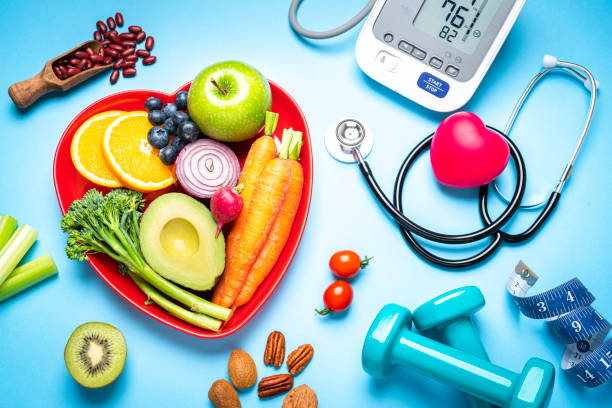The #1 Rated Blood Sugar Formula
7 Foods That People with Hypertension Should Include in Their Diet

Hypertension is one of the many lifestyle diseases that can be managed with a proper diet. Irregular eating habits and unhealthy food can impact your blood pressure levels drastically. This could further impact your vision or lead to kidney failure, stroke or heart failure. Further, tobacco and alcohol abuse, high sodium intake, lack of physical activity, stress and other chronic conditions like diabetes or cholesterol add to the risk. Therefore, it is imperative to manage the condition or, ideally, take the right steps to prevent it.
Nidhi Dhawan, HOD – Dietetics, Saroj Super Speciality Hospital, New Delhi, suggests that there are certain foods that can be added to your diet to control hypertension. Let’s look at them in detail.
Many healthy foods require little or no preparation and can easily become a part of your daily meal or snack. A healthy diet emphasises on consuming vegetables, fruits and low-fat dairy foods along with moderate amounts of whole grains, fish, poultry and nuts. Let’s explore this further.
1. Whole Grains:
Three servings of whole grains every day can help reduce blood pressure. The nutrient content in whole grain products enables these benefits, which refined grains simply can’t offer. Potassium and magnesium, which are present in whole grains, can help lower your blood pressure. Whole wheat, broken wheat, barley and whole wheat bread, along with rice and oats, are low in fat. Additionally, these foods are rich in fibre and have a beneficial effect on cholesterol too.2. Vegetables:
Five servings of fruits and vegetables daily as part of a low-fat diet can lower blood pressure. Squash or pumpkin, sweet potatoes and beets add a good nutritional punch. Leafy greens like spinach, kale and turnip greens are high in potassium and help your kidneys get rid of that extra sodium. Vegetables like tomatoes, carrots and broccoli are full of fibre, vitamins and magnesium. Tossing your salad with a hint of olive oil or balsamic vinegar as a dressing not only enhances the taste but also benefits your cholesterol levels. Avoid canned vegetables as they are high in sodium.3. Fruits:
Fruits contain fibre, potassium and magnesium, and are usually low in fat. The peels of apples, pears and most fruits with pits add a nice texture to your meals or snacks and they contain healthy nutrients and fibre. Even if consumed in small quantities or as juices, fruits can effectively help lower diastolic and systolic blood pressure over time. Pomegranate seeds, raisins, apricots and berries pack a lot of nutrients too, and are a heart-healthy snack. Keep in mind that citrus fruits and juices, like grapefruit, can react with some medicines; so, check with your doctor before adding them to your diet. If you choose canned fruit or juice, ensure that no sugar is added to it.4. Dairy Products:
Choose low- and no-fat dairy. The key to choosing your dairy products is to check the labels. Skimmed milk is an excellent source of calcium and low in fat, which are both important elements of a diet for lowering blood pressure. If you are not a big fan of milk, you can opt for yogurt. If you have trouble digesting dairy products, choose lactose-free products or consider taking an over-the-counter product that contains the enzyme lactase, which can reduce or prevent the symptoms of lactose intolerance. Also try incorporating granola and fruits into your yogurt for extra heart-healthy benefits.5. Meat:
Meat can be a rich source of protein, Vitamin B, iron and zinc. Fatty fish like salmon are loaded with heart-healthy omega-3 fatty acids, which can get your blood pressure to a healthy range. However, the issue with diets that are high in protein from animal sources is that they tend to be high in saturated fat, and that’s a huge risk for your heart. Choose lean varieties of meat and aim for no more than 6 ounces of it a day. Choose fish over meat as it is low in fat and full of vitamins, minerals and omega-3 fats, which help lower blood pressure and prevent blood clots.6. Seeds and Nuts:
Magnesium-rich foods such as almonds, cashew nuts, pumpkin seeds and sunflower seeds can help you manage hypertension. Flaxseed, which is a great source of fibre as well as omega-3 fatty acids, helps reduce inflammation in the body and improves the health of your circulatory system. Stir some of them into your favourite smoothie or morning oatmeal for an added health boost.7. Dark Chocolate:
You don’t need to deprive yourself of dessert in order to control your blood pressure. A little dark chocolate can go a long way when it comes to lowering those numbers, thanks to its flavonoid content. Just make sure that you’re choosing real dark chocolate for availing the best benefits. Foods that are high in sugar, like most milk chocolate bars, have been linked to an increase in blood pressure.Best Foods for Hypertensioncure for high blood pressureDairy and Blood PressureFiber and Whole Grainsfoods in hypertension dietfruits for high blood pressurehome remedy for blood pressureHypertension Managementlean meat for blood pressureNatural Hypertension Remedynatural way to lower blood pressurevegetables for hypertension






